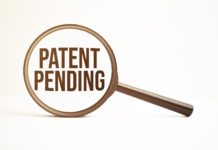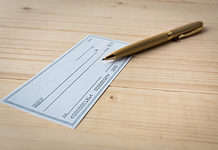Patents are crucial legal statements that allow inventors to retain the rights to their innovations after they’ve been disclosed to the public. This includes all commercial distribution and, thus, profits. If you’re looking to learn how much does a patent cost or how much does a design patent cost, read on to get the details.
Of course, getting a patent isn’t easy; it’s a long and expensive process with a strict set of restrictions you’ve got to adhere to and follow. Furthermore, since it’s the application process that makes getting a patent so pricey, you won’t get your money back even if you aren’t approved by the US Patent and Trademark Office (USPTO).
In this guide, you’ll learn everything you need to know about the different types of patent applications and an in-depth analysis of their costs.

How Much Does a Patent Cost?
The base cost of a regular, non-provisional patent application is $900. Of course, when you add patent lawyer fees, the cost goes up to anywhere between $5,000 and $10,000+, depending on several factors.
There are also a few other expenses you might want to consider, which will be covered below.
Cost By Application Type
There are a few different types of patent applications with varying costs. Knowing where your innovation lies are imperative for calculating an accurate representation of your overall price. We’ll be discussing how much does it cost to patent an idea in USA.
Provisional Patent Application
The provisional patent application is for a preliminary patent that gives your invention temporary legal protection while you file for an official one. It lasts a year and adheres to the USPTO’s non-disclosure agreement.
The base price for a provisional patent comes at the relatively cheap cost of $75 for individuals, $150 for small entities, and $300 for standard. With a patent lawyer and other legal fees, you’re looking at an overall cost of $5,000 – $9,000.
While this patent gives you intellectual property for 12 months, it’s not an official patent, and you’ll have to apply for a non-provisional one when it expires.
Non-Provisional Patent
A non-provisional patent, or a utility patent, gives an applicant full intellectual rights over an innovation for 20 years.
The cost of an application plus review and examination fees will come out to be roughly $900. The addition of a lawyer will up this cost to anywhere between $5,000 and $10,000+, depending on the nature of the innovation.
While exact prices may vary, here’s a general guide for what to expect:
| Type of Invention | Examples | Attorney Fees | Patent Search w/ Opinion |
| Extremely simple | Paper clip or an ice cube tray | $5,000–$7,000 | $1,000–$1,250 |
| Relatively simple | Board game or a flashlight | $7,000–$8,500 | $1,000–$1,250 |
| Minimally complex | Power tool or camera | $8,500–$10,000 | $1,250– $1,500 |
| Moderately complex | Solar panels or cell phones | $10,000–$12,000 | $1,500–$1,750 |
| Relatively complex | Shock-absorbing prosthetic device | $12,000–$14,000 | $1,750–$2,000 |
| Highly complex | Satellite technology and MRI scanner | $14,000–$16,000 | $2,000–$2,500 |
| Software-related | Software, automated systems, and business methods | Over $16,000 | $2,500–$3,000 |
Design Patent
The main purpose of a design patent is to protect a particular visual design of an already existing invention. They’re commonly used by brands to claim rights for the unique look of their products and don’t actually further the innovation’s development.
The overall cost for a design patent is significantly cheaper than a utility patent and will run you between $2,000 and $3,000.
Plant Patent
Plant patents are incredibly uncommon as they are for entities that discover new, asexually reproducing plants and reserve the sole right to take over the production of said plant. With legal fees, application costs, examination fees, and any other charges, the average plant patent will cost between $4,660 and $7,620.
Factors in How Much Does a Patent Cost
Obtaining a patent isn’t as simple as paying a set cost. Many factors can affect what and how much you spend. Some of the most common elements are as follows:
- Size of the applicant. This one is pretty straightforward: small entities such as individuals and micro businesses pay less, while corporations and large organizations pay more.
- Degree of technology. As indicated by the varying costs of different invention complexities, the amount of technology behind an innovation will surely affect the overall cost of the patent.
- Marketability. Inventions with higher value/marketability will warrant more protection and thus warrant more expenses.
- Competition. If the innovation isn’t so innovative, it has to find a way to distinguish itself from all the other patents on the market.
- Location. If you’re trying to protect an innovation in multiple countries, it’s going to cost a lot more.
Other Costs
In addition to attorney fees and patent searches, there are a few other considerable expenses that might be involved in a patent application.
Professional Drawings
Getting an adequate visual representation for your application usually entails hiring a professional to do your drawings. This will likely cost you between $300 and $700.
Patent Prosecution
The overall cost can skyrocket if your patent requires a lot of patent prosecution and negotiation with the USPTO.
As a general rule of thumb, here’s what you can expect:
- Between $2,500 to $4,000 for basic mechanical inventions
- Between $3,000 to $7,000 for complex mechanical inventions
- Between $2,500 to $7,000 for basic electrical or software inventions
- Between $3,500 to $7,500 for complex electrical or software inventions
Maintenance Fees
Finally, there are a few maintenance fees inventors must pay in order to keep their patents up. Unlike patent prosecution expenses, these fees are much more clear-cut:
$980 after 3 1/2 years
$2,480 after 7 1/2 years
$4,110 after 11 years
Example Scenario
Here’s an example breakdown of patent application costs for a steel wrench submitted by a small business:
- Patent search and attorney opinion = $1,250
- Provisional patent application = $2,000
- Filing fee = $130
- Non-provisional patent application based on provisional filing fee = $7,000
- The filing fee to the USPTO for a non-provisional patent application = $800
- Professional illustrations = $300
- Total cost for a utility patent = $11,580
Conclusion
For you to learn how much does a patent cost it’s absolutely imperative to understand it depends on the type of patent, and you also need to take into consideration the other variable costs described above. Given how expensive an application can get, you need to ensure you’re doing everything right and not skimping on any details during the process. We’ve covered how to file a patent and the cost to file a patent.
Remember, while you might be tempted to budget for such a high-priced endeavor, sometimes paying more can save you a lot of time and money in the future.



















